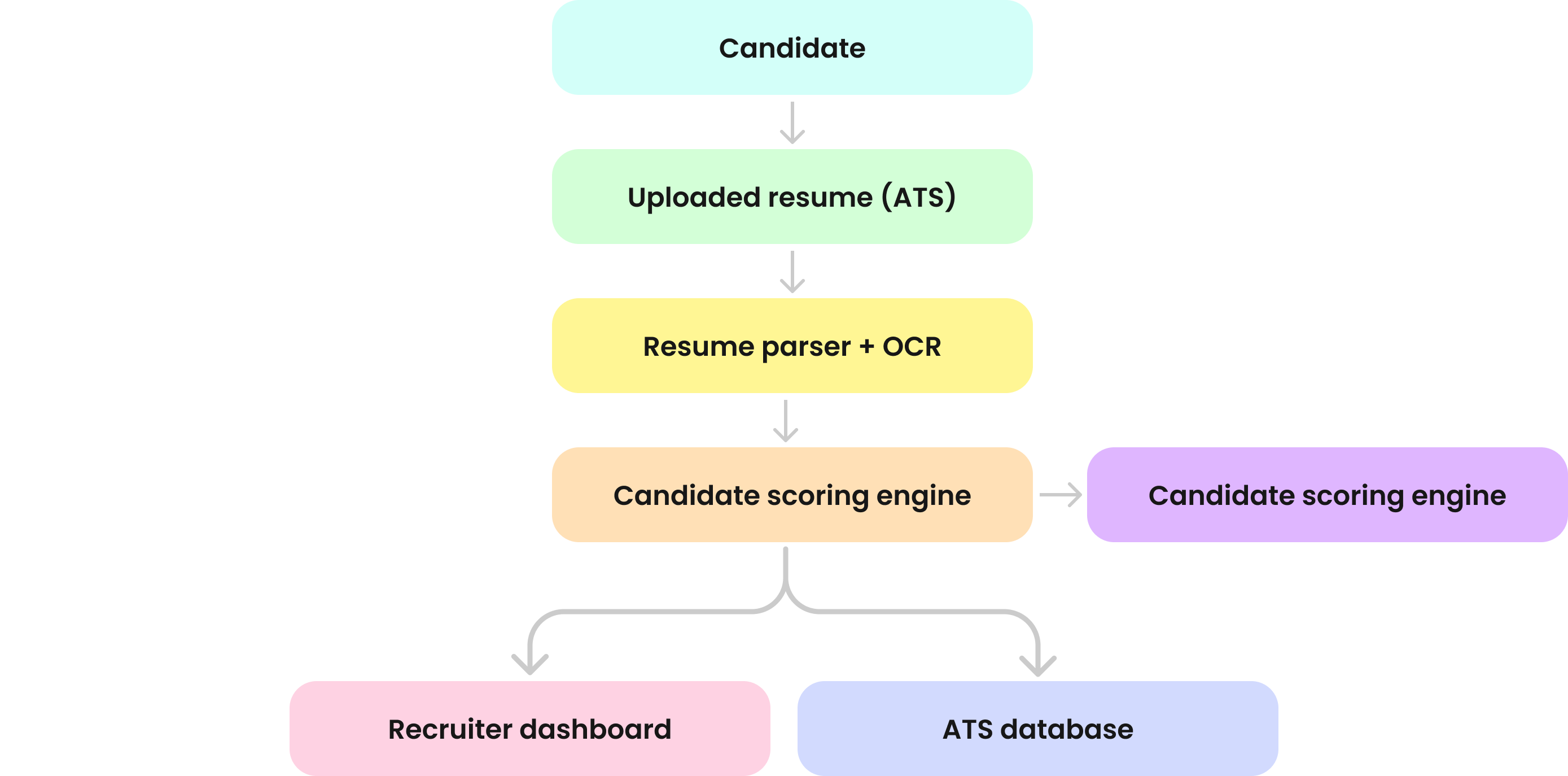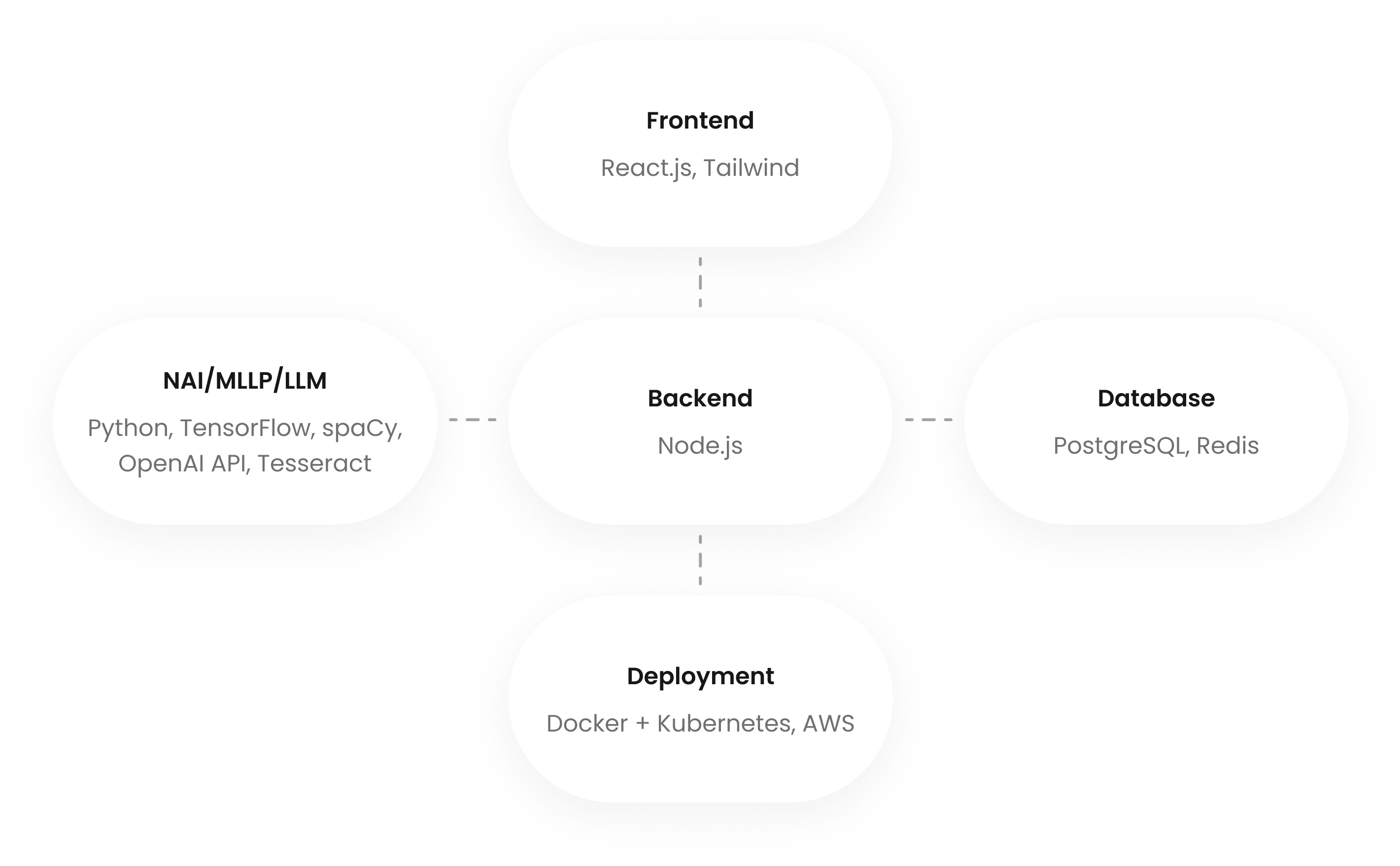AI Agent for Candidate Pre-Screening
Simplifying the process of pre-screening and boosting the efficiency of the HR department
AI development
Human resources
2 months
Web
About the project
A mid-sized recruitment company approached our agency to upgrade their hiring workflow. They were struggling with a high volume of job applications and spending too much recruiter time on manual pre-screening. The client wanted a solution to automate first-round candidate filtering while still ensuring fairness, compliance, and seamless integration with their existing Applicant Tracking System (ATS).
The client had
Existing job portal and ATS
Historical data
We were responsible for
Building an AI agent for the pre-screening process
Integration with existing systems
Project Team
Project manager
Software architect (part-time)
ML engineer
Backend engineer
Frontend engineer
DevOps engineer (part-time)
QA engineer (part-time)
Team
To realize the client’s vision, we have allocated the following team:
Scope of work
We approached the project with a structured strategy that allowed us to move quickly and efficiently.
Discovery and planning
We mapped hiring workflows, defined candidate evaluation criteria, and reviewed the necessary legal requirements. We also assessed data availability and quality.
Data preparation and cleaning
Next, we structured historical candidate data and anonymized sensitive attributes like gender, age, and ethnicity. With clean data, we built datasets for training and evaluation.
AI/ML development and UX/UI design
When the data was ready, we developed a resume parsing pipeline, created a scoring model to match candidates to jobs, and fine-tuned an LLM-based agent for pre-screening conversations.
ATS integration
To integrate the agent into the existing systems, we developed middleware and enabled bi-directional sync for candidate status updates, notes, and AI-generated insights.
Testing and validation
We conducted bias testing against anonymized datasets and user acceptance testing with recruiters. With the feedback from the HR department, we made the necessary iterations.
Deployment and support
Finally, we deployed the solution to the cloud environment. The job didn’t stop there: We still provide ongoing support and small model updates when necessary.
Workflow integration
Key AI agent modules
Here are the modules that constitute the final system.
Resume parsing and skill extraction
AI extracts structured information (skills, job history, education, certifications) from PDFs, images, and Word documents.
Candidate scoring engine
Each applicant scored on a 0–100 scale based on skills match, years of relevant experience, and relevant certifications/education.
Conversational AI pre-screening
Chatbot conducts initial Q&A with candidates about salary expectations, availability to start, soft skills, and motivation.
Recruiter dashboard
A web UI where recruiters can see AI-ranked candidate lists, review parsed resume details and screening chat summaries, and override AI scores if needed.
Tech stack
The technologies we used to realise the LLM integration smoothly.
Development challenges and solutions
Data privacy
Challenge: Hiring data often contains personally identifiable information (PII) like names, photos, gender, and birth dates. Feeding this directly into an AI model risks violating data privacy regulations.
Solution: We implemented a data anonymization pipeline: Before resumes enter the model, PII fields are masked. Also, the AI agent doesn't make final hiring decisions, it only provides recommendations.
Integration with existing ATS
Challenge: The client’s ATS didn’t have a clean API for candidate data. Some data was stuck in PDFs, CSV exports, and custom fields. Without smooth integration, recruiters would have to juggle two systems.
Solution: Our team developed middleware APIs that could translate ATS data formats into the AI system and built ETL pipelines to import/export candidate data nightly until full real-time API access was ready.
Unstructured resumes
Challenge: Many resumes came in unstructured formats (PDFs with tables, scanned images, design-heavy templates). These were difficult to parse correctly, and skills and experience might be misread.
Solution: We used OCR (Optical Character Recognition) for image-based resumes and implemented a confidence flag: If parsing accuracy was less than 85%, the recruiter was notified to review manually.
Result
40% reduction in recruiter time spent on resume screening.
35% faster time-to-hire compared to previous cycles.
Recruiters reported higher satisfaction.





